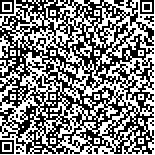| 引用本文: |
-
陆家昌,李杰,赖俊翔,王英辉,姜发军,许铭本,庄军莲.广西近岸强额孔雀水蚤对球形棕囊藻的下行控制[J].广西科学院学报,2020,36(3):323-329. [点击复制]
- LU Jiachang,LI Jie,LAI Junxiang,WANG Yinghui,JIANG Fajun,XU Mingben,ZHUANG Junlian.Top-down Control of Parvocalanus crassirostris on Phaeocystis globosa in Coastal Water of Guangxi[J].Journal of Guangxi Academy of Sciences,2020,36(3):323-329. [点击复制]
|
|
| 本文已被:浏览 455次 下载 478次 |

码上扫一扫! |
| 广西近岸强额孔雀水蚤对球形棕囊藻的下行控制 |
|
陆家昌1, 李杰2, 赖俊翔1, 王英辉2, 姜发军1, 许铭本1, 庄军莲1
|
|
|
| (1.广西科学院, 广西北部湾海洋研究中心, 广西近海海洋环境科学重点实验室, 广西南宁 530007;2.广西大学海洋学院, 广西南宁 530004) |
|
| 摘要: |
| 为认识广西近岸强额孔雀水蚤Parvocalanus crassirostris对球形棕囊藻(Phaeocystis globosa,下文简称棕囊藻)的下行控制作用,首先通过垂直拖网的方式对广西近岸强额孔雀水蚤丰度的月变化进行调查;然后,通过室内实验获得强额孔雀水蚤对单细胞棕囊藻的摄食率;最后,在棕囊藻赤潮易发季节,选择固定站位对棕囊藻囊体数量与强额孔雀水蚤丰度之间的关系进行连续观测。结果发现,强额孔雀水蚤在广西近岸终年存在;在调查海域,其丰度变化为(1 005±886)ind.·m-3到(10 723±5 168)ind.·m-3,平均值为(5 878±3 373)ind.·m-3。棕囊藻囊体密度高值期出现在强额孔雀水蚤丰度低值期。强额孔雀水蚤可高效摄食单细胞棕囊藻,水温从16℃到28℃时,其对单细胞棕囊藻的摄食率从(61.55±44.65)×103 cells·ind.·h-1到(73.92±4.66)×103 cells·ind.·h-1,但统计分析结果表明,水温对摄食率影响并不显著(P>0.05)。较之小孔径浮游生物网(孔径160 μm),以往使用大孔径浮游生物网(孔径505 μm)对广西近岸强额孔雀水蚤进行采样,所得强额孔雀水蚤丰度降低2个数量级。鉴于强额孔雀水蚤可高效摄食单细胞棕囊藻,而自然海区中又存在高密度的强额孔雀水蚤,推测强额孔雀水蚤是广西近岸单细胞棕囊藻的重要捕食者,其摄食调控在控制棕囊藻赤潮的形成中可能发挥重要作用。在研究广西近岸棕囊藻赤潮发生机理时,建议考虑以强额孔雀水蚤为代表的小型桡足类动物的下行控制作用。 |
| 关键词: 强额孔雀水蚤 桡足类 球形棕囊藻 下行控制 北部湾 |
| DOI:10.13657/j.cnki.gxkxyxb.20201027.007 |
|
| 基金项目:广西自然科学基金联合资助培育项目(2018GXNSFAA138194),广西自然科学基金青年基金项目(2016GXNSFBA380188),广西科学院基本业务费资助项目(2017YJJ23017)和广西创新驱动发展专项(AA17202020)资助。 |
|
| Top-down Control of Parvocalanus crassirostris on Phaeocystis globosa in Coastal Water of Guangxi |
|
LU Jiachang1, LI Jie2, LAI Junxiang1, WANG Yinghui2, JIANG Fajun1, XU Mingben1, ZHUANG Junlian1
|
| (1.Guangxi Key Laboratory of Marine Environmental Science, Guangxi Beibu Gulf Marine Research Center, Guangxi Academy of Sciences, Nanning, Guangxi, 530007, China;2.School of Marine Sciences, Guangxi University, Nanning, Guangxi, 530004, China) |
| Abstract: |
| To evaluate the top-down control of Parvocalanus crassirostris on Phaeocystis globosa,P.crassirostris abundance in coastal water of Guangxi was investigated by monthly vertical trawling firstly. Secondly, experiments were also conducted in laboratory to measure the ingestion rate of P.crassirostris on solitary cells of P.globosa.Finally, the relationship between density of P.crassirostris and colonies of P.globosa were investigated in a fixed-site during the red tide prone seasons. The results indicated that P.crassirostris appeared all year round in the coastal water of Guangxi. In the surveyed sea area, its abundance varied from (1 005±886) ind.·m-3 to (10 723±5 168) ind.·m-3.The average value was (5 878±3 373) ind.·m-3. And the highest colonies density of P.globosa appeared when P.crassirostris abundance was low.P.crassirostris efficiently ingested solitary cells of P.globosa.When the water temperature was from 16℃ to 28℃, its ingestion rate ranged from (61.55±44.65)×103 cells·ind.·h-1 to(73.92±4.66)×103 cells·ind.·h-1.But the statistical analysis results showed that the water temperature had no significant effect on the ingestion rate (P>0.05). Compared with the small mesh-sized plankton net (pore size 160 μm), the big mesh-sized plankton net (pore size 505 μm) was used to sample the P.crassirostris in the coast of Guangxi, and the abundance of the P.crassirostris was reduced by 2 order of magnitude. Given that high abundance of P.crassirostris and its remarkable ingestion rate on solitary cells, we suggest that P.crassirostris,as the important predator of P.globosa solitary cells,may play an important role in regulating the formation of P.globosa red tide. When studying the occurrence mechanism of P.crassirostris red tide in the coastal water of Guangxi, it is recommended to consider the top-down control of small copepods represented by P.crassirostris. |
| Key words: Parvocalanus crassirostris copepod Phaeocystis globosa top-down control Beibu Gulf |